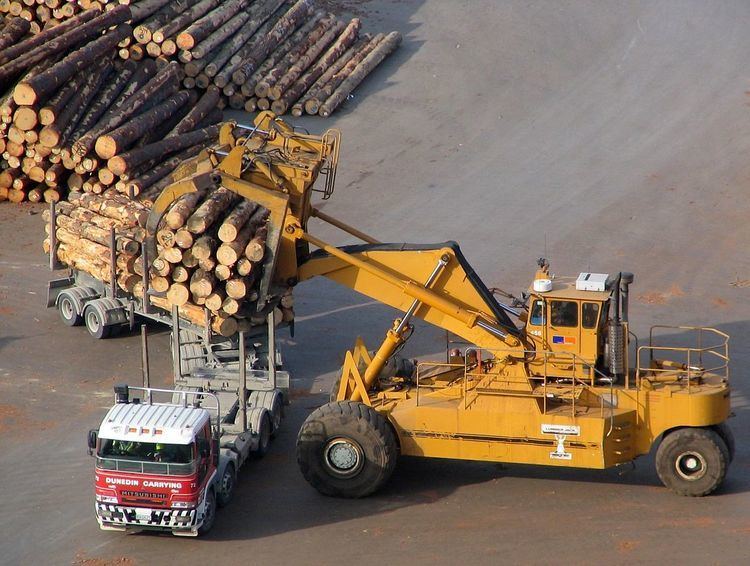 | ||
Forestry in New Zealand has a history starting with European settlement in the 19th century and is now an industry worth seven percent of annual revenue. Much of the original native forest cover was burnt off and logged, however forests have been extensively planted, predominantly with fast-growing cultivars of the Monterey Pine. Wood chips, whole logs, lumber and paper products are exported from New Zealand.
Contents
Deforestation in New Zealand on public land attracted opposition with protests and environmental groups becoming very active until it ended in 2000. Logging of native forests now only occurs on private land if it is shown to be sustainable.
History
Milling of New Zealand's extensive native forests was one of the earliest industries in the European settlement of the country. The long, straight hardwood from the kauri was ideal for ship masts and spars. As the new colony was established, timber was the most common building material, and vast areas of native forest were cleared. Rimu, tōtara, matai, and miro were the favoured timbers. The Monterey Pine, Pinus radiata was introduced to New Zealand in the 1850s. It thrived in the conditions, reaching maturity in 28 years, much faster than in its native California. It was found to grow well in the infertile acidic soil of the volcanic plateau, where attempts for agriculture had failed. Thomas William Adams experimented with P. radiata and other trees in Canterbury from the 1870s, and promoted the early forestry industry. The Government initiated planting of exotic forests in 1899 at Whakarewarewa, near Rotorua. This was to address growing timber shortages as slow-growing native forests were exhausted. In the 1930s, vast areas of land were planted in Pinus radiata by relief workers. The largest tract was the 188,000-hectare Kāingaroa forest, the largest plantation forest in the world. As the major forests matured, processing industries such as the Kinleith Mill at Tokoroa and the Tasman Mill at Kawerau were established.
Plantation forests
Plantation forests of various sizes can now be found in all regions of New Zealand except Central Otago and Fiordland. In 2006 their total area was 1.8 million hectares, with 89% in Pinus radiata and 5% in Douglas fir (Pseudotsuga menziesii) Log harvesting in 2006 was 18.8 million m3, down from 22.5 million m3 in 2003. This is projected to rise as high as 30 million m3 as newer forests mature. The value of all forestry exports (logs, chips, sawn timber, panels and paper products) for the year ended 31 March 2006 was $NZ 3.62 billion. This is projected to rise to $4.65 billion by 2011. Australia accounts for just over 25% of export value, mostly paper products, followed by Japan, South Korea, China and the United States. Within the New Zealand economy, forestry accounts for approximately 4% of national GDP. On the global stage, the New Zealand forestry industry is a relatively small contributor in terms of production, accounting for 1% of global wood supply for industrial purposes.
Woodchipping
Softwood and hardwood wood chips are exported from New Zealand.
